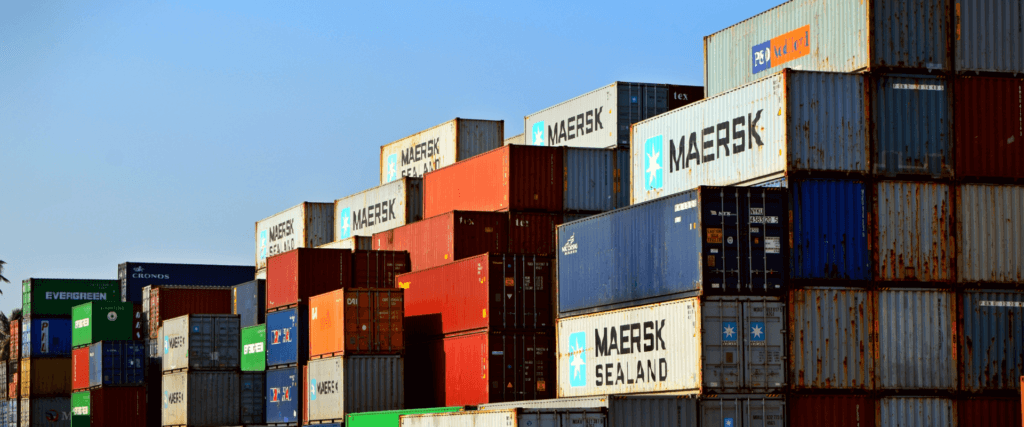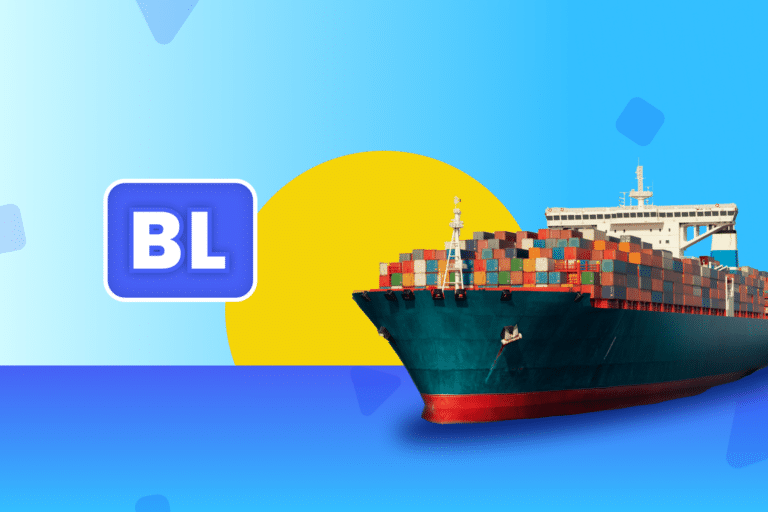Transporting dangerous cargo requires high specialization, prevention and responsibility, both from logistics operators, drivers, operators, administrative staff and all those who participate in this complex task. It is the only way to prevent accidents that can severely harm people and environment.
Freight transport is, in itself, a challenging and high-risk activity. This is due to the permanent need to meet tight schedules and accomplish in time the requirements of a highly competitive market.
However, there is a specific area where the risks multiply exponentially, coming to represent a certain threat to people and the environment: the transport of dangerous cargo.
This has been proven in numerous road, river, sea and air accidents, resulting in the death of drivers, crew members, passengers or innocent bystanders. Accidents that also caused serious cases of environmental contamination (such as fuel spills, and gas or radioactive material leaks).
Therefore, transporting this type of product or merchandise implies a high responsibility, which requires deep planning and prior consideration, both from the cargo generator and from the transport and logistics companies.
What are dangerous cargoes?
Dangerous cargoes or goods are all those products that, due to their nature, represent a high risk for those who handle them, as well as for the environment where they must circulate and/or move. Be it land, air or sea.
This danger is due to the fact that an eventual spill or misuse can cause damage of various kinds to people or the environment. Effect that can be more or less significant, depending on the characteristics of the transported materials.
In order to transport these cargoes or goods, we must apply strict and very specific regulations, which have different characteristics according to the nature of each hazardous material.
How the law regulates the transport of dangerous cargo?
Given the potential negative impact that this task can generate on people and the environment, the United Nations Organization, UN, established a base classification that identifies and defines the different types of dangerous cargo.
Today this general definition is used as a reference to define the respective internal regulations of each country, standardizing both risk identification and the respective accident prevention and mitigation measures.
The regulations corresponding to the International Legislation on the Transport of Dangerous Goods are the ADR (land-road), ADN (fluvial-maritime), IATA (air) and RID (railway).

What are the types of dangerous cargo?
Dangerous cargo or goods can be of different types, such as chemical products, gases, mixtures of substances, clinical waste or even manufactured products (such as lithium batteries), among many other alternatives.
For this reason, the UN divides them into nine different classes, according to their chemical or physical nature, each of which is identified, during transport, with its respective label. These classes are as follows:
Class 1: Explosive materials and articles
They are those that present a risk of explosion, or of exothermic and chemical reactions that result in accumulation of gases and detonation. For example, bombs, fireworks, detonators or ammunition. This class is divided into six different types, depending on the reaction produced by the explosives before and after activation.
●1.1 Mass Explosion Risk
●1.2 Projection risk
●1.3 Risk of fire and slight explosion, or slight projection
●1.4 Minimum risk
●1.5 Explosive agents
●1.6 Very insensitive detonating items
This subdivision makes it possible to set a compatibility range to specify which of these elements may or may not be transported together.
Class 2: Gases
These materials are often transported under high pressure to reduce volume and save space. Therefore, any incident or accident in the containers (trucks, ships or trains), can cause a leak with fatal consequences, both physically and chemically (burns, fires or massive poisoning). Gases can be of three types:
●2.1 Flammable gases, such as methane (compressed natural gas), butane and propane (liquefied petroleum gases).
●2.2 Non-flammable and non-toxic gases, such as helium
●2.3 Toxic gases, such as chlorine.
Class 3: Flammable Liquids
This category includes flammable liquids and liquid explosives with low sensitivity. For example, fuels and fuels (gasoline and diesel oil), paints, varnishes and turpentine, among others.
Class 4: Flammable Solids
They are substances that can undergo spontaneous combustion (such as wheat dust); or which, in contact with water, give off flammable gases. They are subdivided into three types:
●4.1 Solid flammable materials, self-reactive materials and solid desensitized explosive materials.
●4.2 Materials that can undergo spontaneous ignition, such as carbon.
●4.3 Materials that, in contact with water, give off flammable gases, such as sodium and potassium.
Class 5: Oxidizing substances and organic peroxides
Oxidizers are chemical compounds that can cause or favor combustion, just as oxygen allows to ignite fire. Organic peroxides, meanwhile, are compounds that are used to produce different types of polymers. They are subdivided, in turn, into two types:
●5.1 Substances that can cause fire when in contact with other substances, such as ammonium nitrate.
●5.2 Hydrogen peroxide derivatives. This material is extremely hazardous, so there are severe limitations on the amount that can be loaded onto a transport unit (truck, train, or ship).
Class 6: Toxic and infectious materials
Toxic materials, or “chemical poisons,” are all those capable of causing severe poisoning when they come into contact with our body. Either by swallowing them, inhaling them or absorbing them through the skin. For example, methyl alcohol or methanol.
Infectious materials, meanwhile, are all those that contain bio infectious pathogens. For example, laboratory samples containing viruses or bacteria.
Class 7: Radioactive Substances
They are all materials or elements that emit radiation beyond the limits allowed by health regulations. This is because their atoms are unstable and change their structure, which is why they can cause poisoning, alterations and genetic mutations. For example, uranium, plutonium, polonium and radium, among others.
Class 8: Corrosive Substances
They are all those that can destroy or irreversibly damage another surface or organic substance if they come into contact with them. They can cause burns and serious injuries to living tissue, but also can destroy very strong materials, such as steel. Typical examples are sulfuric acid, hydrochloric acid, muriatic acid, and ammonia.
Class 9: Substances of diverse danger
They are those whose level of danger is not specified in the other classifications. However, they have other associated risks. For example, industrial adhesives, medical-surgical waste, dry ice and liquids at high temperatures, such as bitumen, among others.
8 necessary precautions for the transport of dangerous cargo
This large quantity of dangerous substances or goods requires extremely specialized, careful and responsible transport. This not only implies rigorously complying with current legislation, but also maximizing the necessary measures to reduce the permanent high risk of accidents and prevent any danger to people and/or the environment.
For this, companies need an adequate system of checklists which allows, for example, to control the use of appropriate containers, optimize temperature management, verify the correct separation of chemical products, supervise the expertise and training of the personnel in charge, and verifying the validity of professional trucks driver’s licenses, for example.
Some of the main points that it is recommended to control, through a complete and updated checklist, are the following:
1. Properly separate the different materials
It is essential to know and understand both the nature and danger of the cargo or merchandise transported, whether by truck, train, plane or ship. This implies being aware of all the inherent risks and complying with current regulations.
Additionally, it is important to prevent incompatible classes of dangerous goods from coming into contact with each other. Any carelessness could cause fires, explosions, spills of corrosive liquids or release of toxic vapors.
Hazardous products must be stored in separate containers, with specific identification numbers and markings. Similarly, in some cases we require completely different transport vehicles (for example, corrosive liquids should never be transported together with flammable solids or gases).
Also, when selecting the most appropriate trailer or container, we have to make sure that the products are packed safely and stably.
2. Know and control storage temperatures
Some products, such as organic peroxides, must be kept below a certain temperature to avoid combustion. Therefore, it is necessary to record the measurement corresponding to each material, and control it permanently during transport.
3. Know the respective flash points
It is vital to store flammable products below their respective flash point, in order to avoid explosions and fires. As it is not a universal measure, the logistics operator must ensure that all members of his team (including drivers, crew, loaders and administrative) know the specific flash points of each cargo or dangerous goods, before transporting it.
4. Have the correct transport documentation
It is essential to have all transport documents available and up to date. These must specify all information required by the authorities, including the consignor’s identification and contact information; description of the dangerous goods transported; and log with accident prevention measures.
In addition, the prohibited passage areas must be known, including land, river and air routes that cannot be traveled with cargo or dangerous goods.
In Chile, this activity is currently regulated by Supreme Decree No. 298 (1994) and Decree No. 40 (2022), both from the Ministry of Transport and Telecommunications.
5. Correctly label each product
It is mandatory to label all dangerous cargoes according to UN classification, mentioned above. This includes transportation vehicles, and primary and secondary containers used.
6. Maximize precautions before and during transport
Make sure all cargo is properly packed and secured. This includes, in the case of trucks, ensuring that the cushioning and closing or securing systems are appropriate, so that the load does not move, fall or leak (as applicable).
7. Properly download
We must mandatorily follow to the letter all security protocols established for the download process. This implies clearing any obstacles and minimizing the traffic, both of vehicles and people, in the nearby area (be it a warehouse, a port or/and a rail or air terminal).
8. Train staff
It is vital to constantly improve the skills and expertise of everyone involved in the transport chain. This includes drivers, pilots, ship and train crew members, cargo handlers, packers, crane or forklift operators, administrative officials, merchandise inspectors and supervisors, among others.
Everyone must be adequately trained in their specific tasks, as well as in all the other processes of the chain, including the respective actions necessary to face a crisis or contingency scenario.
The value of technological contribution
Given the extreme complexity of these tasks, very strict permanent controls are required, which should not be completely subject to human memory. In this sense, modern technology is an essential ally to efficiently design and implement electronic checklists that help comply with all the security measures established for the safe transportation of dangerous cargo. By land, sea and air.
One of these options is the DataScope Dangerous Goods Checklist, designed to accomplish this task with the highest levels of attention, care and efficiency.
This solution allows strict control of variables such as load characteristics, potential risks, necessary accident mitigation/prevention measures, scheduling of maintenance tasks, issuance of alerts or warnings, and preparation of reports, among many other options.
All this increases the operational efficiency of transport companies, maximizes the health and safety levels of those who work in these environments and helps protect the environment.







